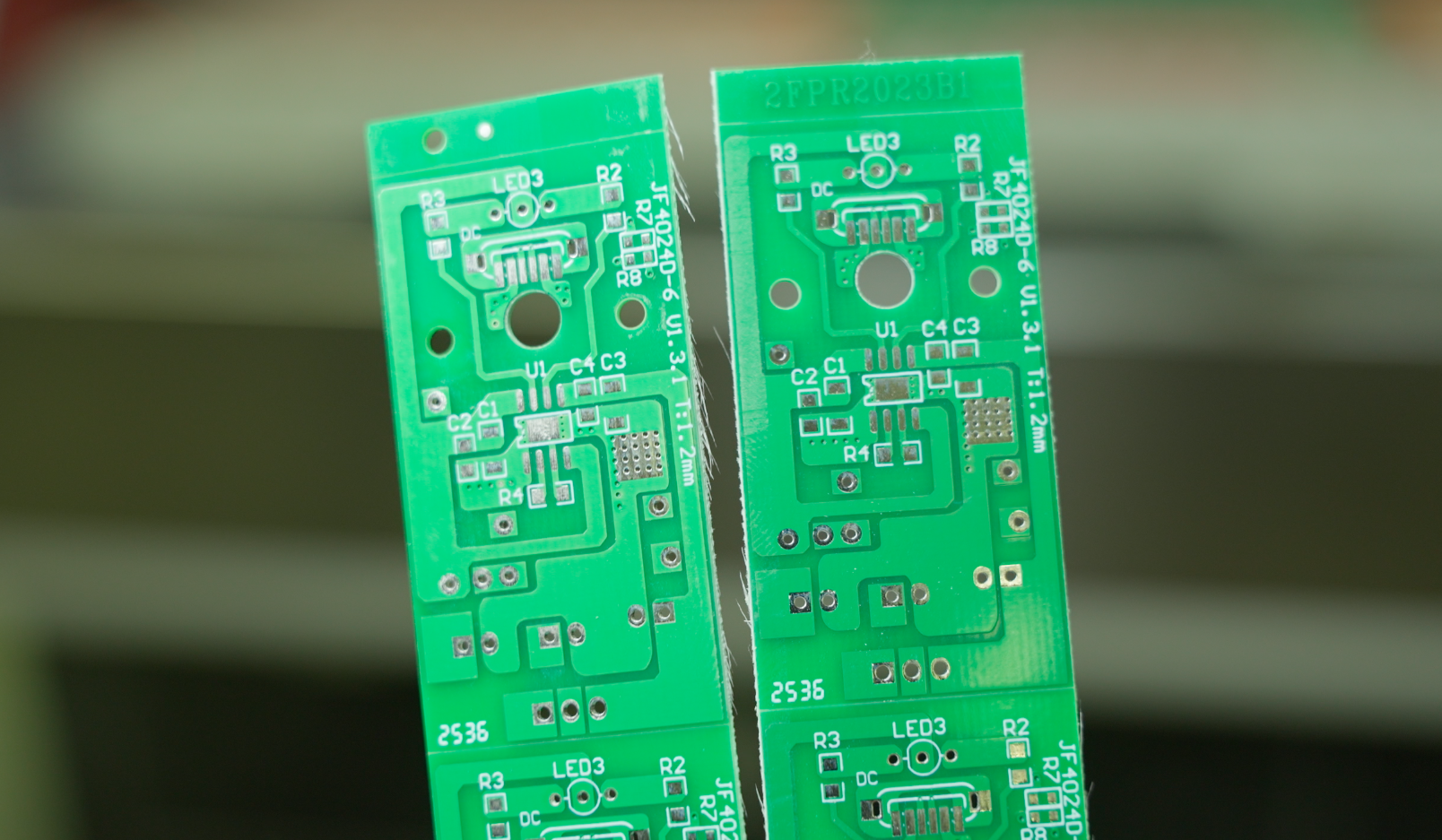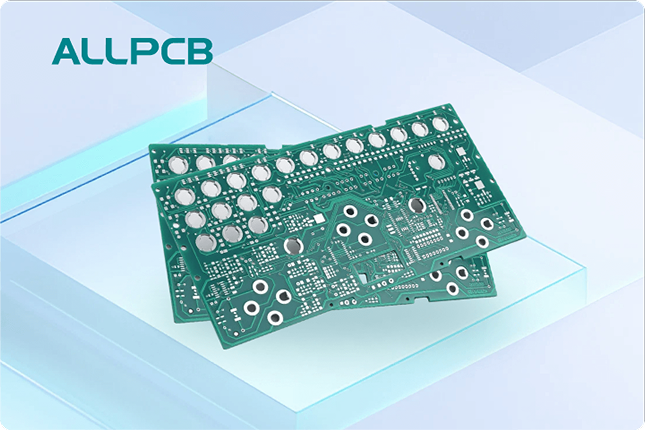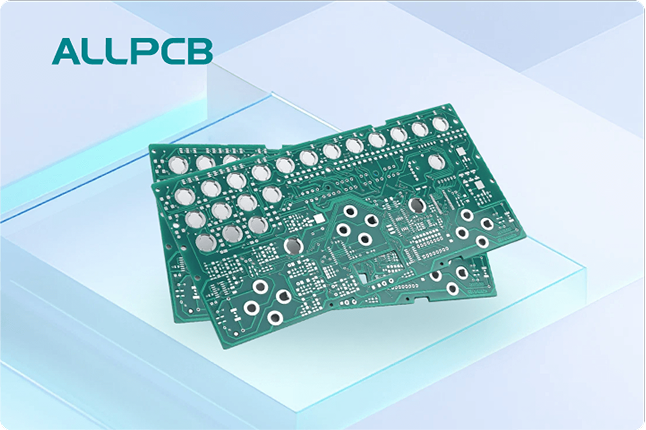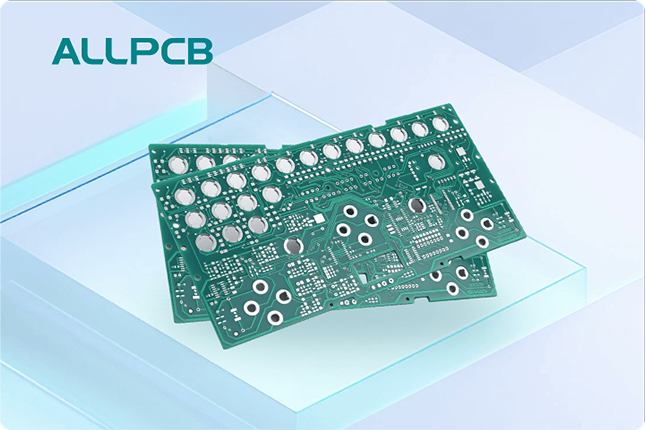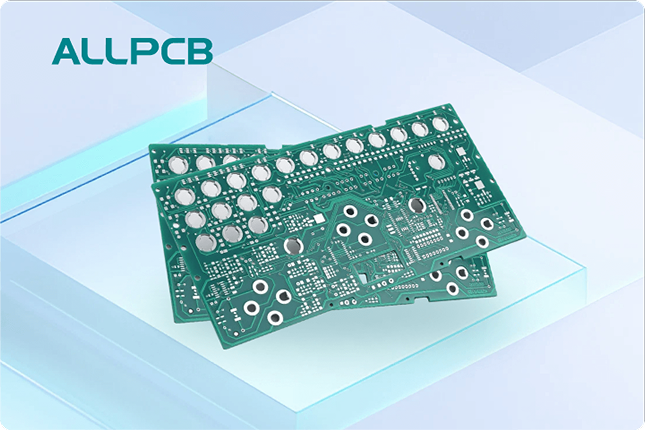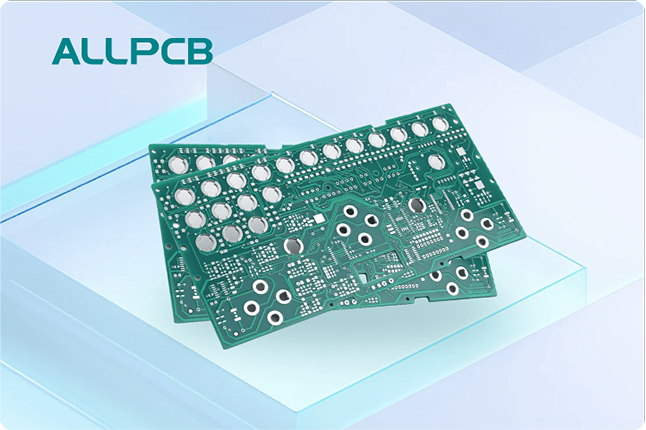In the fast-paced world of electronics manufacturing, ensuring the quality and functionality of printed circuit boards (PCBs) is critical. Two of the most common methods for testing PCBs are Flying Probe Testing (FPT) and In-Circuit Testing (ICT), also known as fixture testing. Both approaches aim to detect defects like shorts, opens, and component issues, but they differ significantly in terms of setup, execution, and—most importantly—cost. For engineers tasked with balancing quality, budget, and production timelines, choosing the right testing method can make or break a project.
In this blog, we'll dive deep into a cost comparison between flying probe and fixture testing, exploring their processes, advantages, and limitations. By the end, you'll have a clear understanding of which method suits your project's needs, backed by practical insights and data. Whether you're working on prototypes or high-volume production, this guide will help you make informed decisions to optimize your PCB testing strategy.
Recommended Reading: Introduction to PCB Testing: ICT, Flying Probe, and Functional Tests
Understanding Flying Probe Testing (FPT)
Flying Probe Testing is a fixtureless, automated method that uses movable probes to test electrical connections and components on a PCB. These probes, typically ranging from two to six per machine, 'fly' across the board, making contact with specific test points to measure properties like resistance, capacitance, and continuity. FPT relies on software-driven instructions to guide the probes, eliminating the need for custom fixtures.
Key Features of FPT
-
No Custom Fixtures: Unlike ICT, FPT doesn't require a physical test fixture, reducing upfront costs.
-
Flexibility: FPT adapts easily to different PCB designs, making it ideal for prototypes and low-to-medium volume production.
-
Precision: Advanced FPT systems, such as the Seica Spa Pilot V8, can contact pads as small as 80 microns, suitable for high-density interconnect (HDI) boards.
-
Test Time: Testing can take longer, often 5–15 minutes per board, depending on complexity and the number of test points.
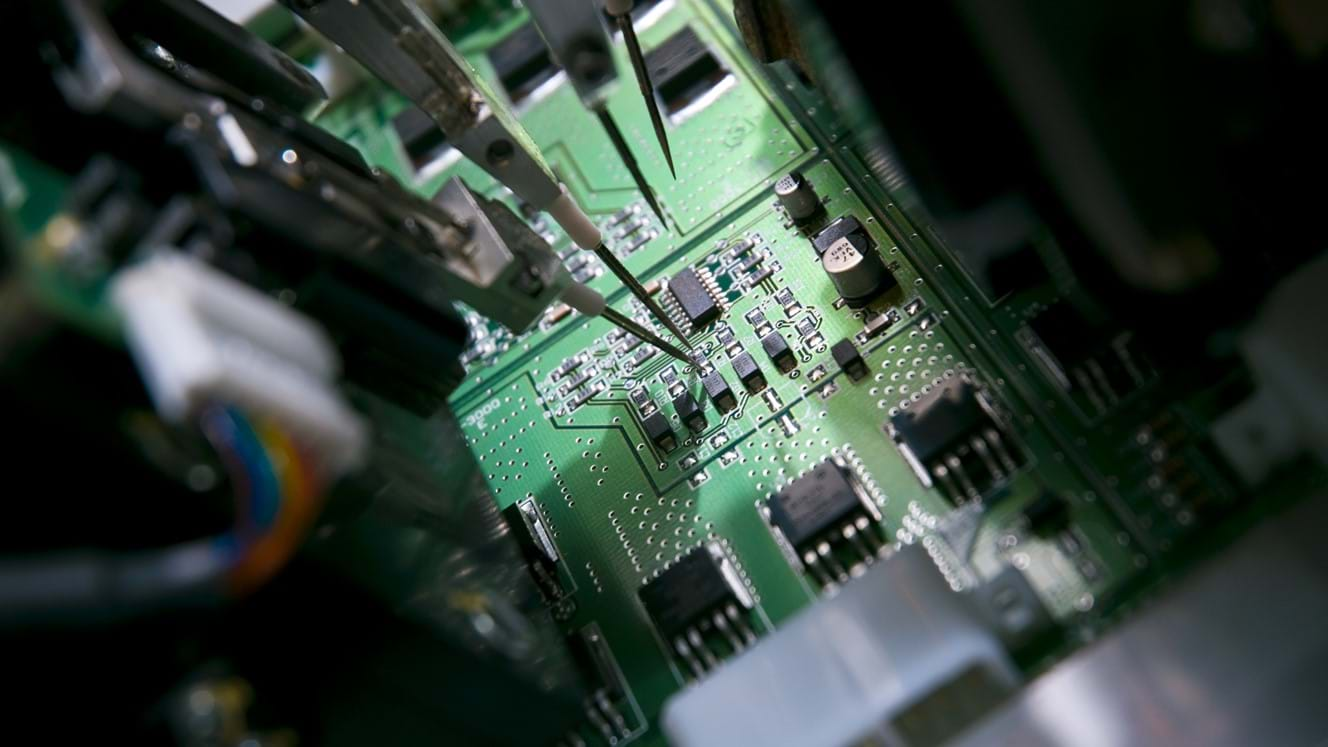
Understanding Fixture Testing (In-Circuit Testing)
In-Circuit Testing, or fixture testing, uses a 'bed of nails' fixture—a custom-built array of spring-loaded pogo pins designed to contact specific test points on a PCB simultaneously. This method tests for assembly defects, component functionality, and electrical characteristics like signal strength and voltage levels. ICT is a staple in high-volume manufacturing due to its speed and comprehensive coverage.
Key Features of ICT
-
High Throughput: ICT tests all points simultaneously, completing a test cycle in about 1–2 minutes per board.
-
Custom Fixtures: Each PCB design requires a unique fixture, which can cost $10,000–$20,000 to design and build.
-
Comprehensive Testing: ICT verifies component values, checks for shorts and opens, and can test digital circuit functionality, though complex functional tests may be cost-prohibitive.
-
Scalability: Best suited for high-volume production where fixture costs are amortized over thousands of units.
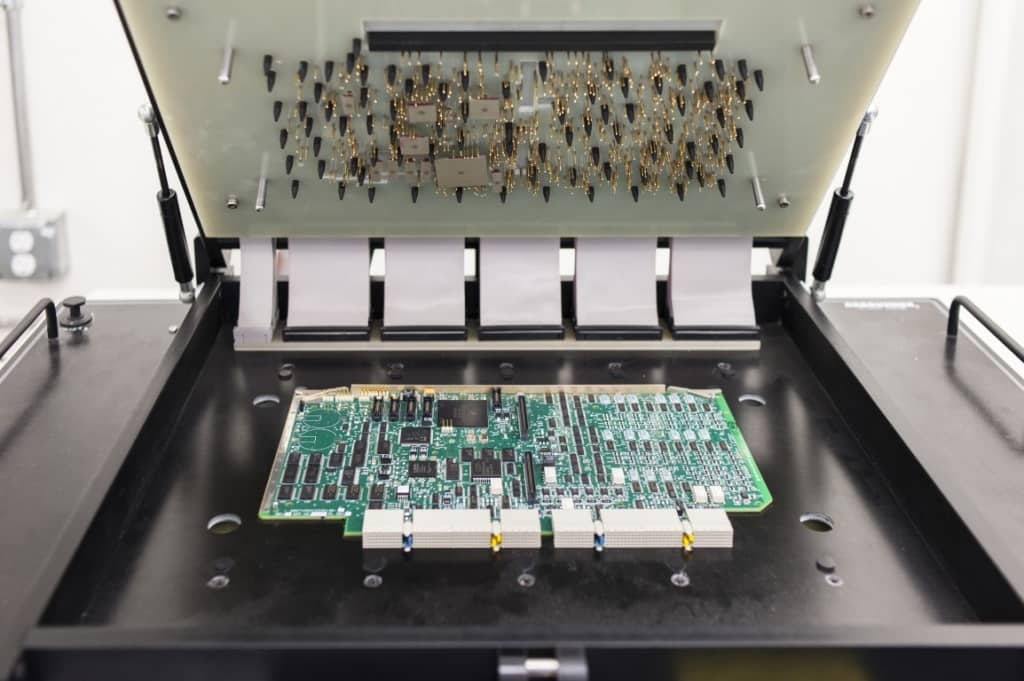
Cost Breakdown: Flying Probe vs. Fixture Testing
When choosing between FPT and ICT, cost is often the deciding factor. Below, we break down the key cost components for each method, focusing on setup, operational, and long-term expenses.
Setup Costs
-
Flying Probe Testing:
-
No Fixture Costs: FPT's fixtureless design eliminates the need for custom hardware, significantly reducing upfront expenses. Test programs are created using PCB design data (e.g., Gerber files, IPC-2581, or ODB++ formats), which can be generated in hours or days.
-
Programming Costs: Developing a test program requires CAD data conversion and software setup, typically costing $500–$2,000, depending on board complexity.
-
Equipment Costs: FPT machines are expensive, with high-end models costing $100,000–$500,000. However, manufacturers typically absorb this cost, passing only a fraction to customers.
-
-
Fixture Testing (ICT):
-
Fixture Development: Custom fixtures are the largest upfront cost, ranging from $10,000 to $20,000 per PCB design. Complex boards with thousands of test points may push costs higher.
-
Programming Costs: Similar to FPT, ICT requires test program development, costing $1,000–$3,000, depending on the number of test points and complexity.
-
Lead Time: Designing and manufacturing a fixture can take 2–4 weeks, delaying testing for new designs.
-
Operational Costs
-
Flying Probe Testing:
-
Per-Board Cost: FPT is slower, with test times of 5–15 minutes per board. This translates to higher per-unit costs, typically $5–$20 per board for low-volume runs (under 1,000 units).
-
Maintenance: Probes and motors require regular maintenance to prevent wear and ensure accuracy, adding minor operational costs.
-
Retesting: FPT allows quick program updates for design changes, reducing costs for retesting or iterations.
-
-
Fixture Testing (ICT):
-
Per-Board Cost: ICT's high throughput (1–2 minutes per board) results in lower per-unit costs, often $1–$5 per board for high-volume runs (10,000+ units).
-
Fixture Maintenance: Fixtures require periodic maintenance or replacement due to wear on pogo pins, costing $500–$2,000 over time.
-
Design Changes: Any PCB design revision may require fixture modifications or a new fixture, adding $5,000–$15,000 per update.
-
Long-Term Cost Considerations
-
FPT: Ideal for low-to-medium volume production (up to 1,000 units) and prototypes, FPT offers long-term savings by avoiding fixture costs and enabling rapid design iterations. However, per-board costs remain high for large runs.
-
ICT: For high-volume production (10,000+ units), ICT's lower per-unit costs and faster testing make it more economical over time, as fixture costs are spread across many units.
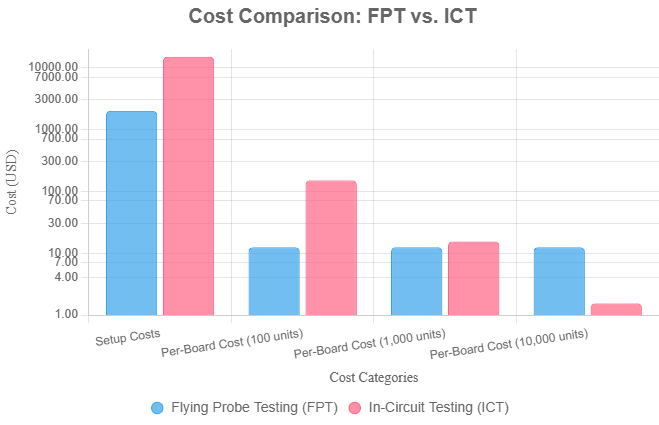
Advantages and Limitations
Flying Probe Testing
Advantages:
-
Cost-Effective for Low Volumes: No fixture costs make FPT ideal for prototypes and small runs (under 1,000 units).
-
Flexibility: Easily adapts to design changes without hardware modifications.
-
Accessibility: Probes can access small pads (down to 80 microns) and complex boards, including HDI and flex circuits.
-
Quick Setup: Test programs can be developed in hours, reducing time-to-market for prototypes.
Limitations:
-
Slower Testing: Test times of 5–15 minutes per board are impractical for high-volume production.
-
Limited High-Frequency Testing: FPT struggles with high-frequency signals due to probe limitations.
-
Potential for Damage: Probes may leave small pits on test pads, though modern systems minimize this issue.
Fixture Testing (ICT)
Advantages:
-
High Throughput: Tests entire boards in 1–2 minutes, ideal for high-volume production.
-
Comprehensive Coverage: Simultaneously tests all points, ensuring thorough defect detection.
-
Cost-Effective for High Volumes: Fixture costs are amortized over large runs, reducing per-unit expenses.
Limitations:
-
High Upfront Costs: Custom fixtures are expensive and time-consuming to develop.
-
Inflexibility: Design changes require fixture updates or replacements, increasing costs and delays.
-
Accessibility Issues: Pogo pins struggle with small pads or densely packed boards, limiting use for HDI designs.
| Category | Flying Probe Testing (FPT) | In-Circuit Testing (ICT) |
|---|---|---|
| Cost | Low setup costs ($500–$2,000 for programming, no fixture). Higher per-board cost ($5–$20) for low volumes. | High setup costs ($10,000–$20,000 for fixture). Lower per-board cost ($1–$5) for high volumes (10,000+ units). |
| Speed | Slower (5–15 minutes per board). Less suitable for high-volume production. | Fast (1–2 minutes per board). Ideal for high-volume production. |
| Flexibility | Highly flexible. Easily adapts to design changes without hardware modifications. Quick setup (hours). | Less flexible. Design changes require fixture updates ($5,000–$15,000). Long setup time (2–4 weeks). |
| Suitability | Ideal for prototypes and low-to-medium volumes (1–1,000 units). Suitable for HDI boards (80-micron pads). | Best for high-volume production (10,000+ units). Limited for HDI boards due to pogo pin accessibility. |
| Limitations | Slower testing. Limited for high-frequency signals. Probes may leave small pits on pads. | High upfront costs. Inflexible for design changes. Struggles with small pads or dense boards. |
Choosing the Right Method for Your Project
The decision between FPT and ICT depends on several factors, including production volume, board complexity, budget, and timeline. Here's a practical guide to help you choose:
-
Prototypes and Low-Volume Production (1–1,000 units): FPT is the clear winner due to its low setup costs and flexibility. For example, a startup developing a new IoT device with 100 units can save $10,000–$20,000 by avoiding fixture costs.
-
Medium-Volume Production (1,000–10,000 units): Evaluate trade-offs. FPT remains viable for complex boards or frequent design changes, but ICT may be more cost-effective if volumes approach 10,000 units.
-
High-Volume Production (10,000+ units): ICT is typically the best choice due to its speed and lower per-unit costs. For instance, a consumer electronics manufacturer producing 50,000 smartphone PCBs can amortize a $15,000 fixture cost to just $0.30 per board.
-
Complex or HDI Boards: FPT's precision makes it ideal for boards with fine-pitch components or small test pads (e.g., 0.1 mm pitch BGA packages).
-
Time-Sensitive Projects: FPT's quick setup (hours vs. weeks for ICT) is critical for rapid prototyping or tight deadlines.
Combining FPT and ICT for Optimal Results
In some cases, combining FPT and ICT can maximize quality and efficiency. For example, during the prototyping phase, FPT can validate initial designs quickly and cost-effectively. Once the design is finalized and moves to high-volume production, ICT can take over for faster, more economical testing. This hybrid approach is common in industries like automotive electronics, where a manufacturer might use FPT to test 50 prototype boards for an advanced driver-assistance system (ADAS) before scaling to 100,000 units with ICT.
Additionally, pairing FPT or ICT with Automated Optical Inspection (AOI) can enhance defect detection. AOI verifies component placement and solder joint quality, complementing the electrical tests performed by FPT or ICT. This combination can achieve test coverage of over 95%, ensuring high reliability.
How ALLPCB Supports Your PCB Testing Needs
At ALLPCB, we understand the importance of choosing the right testing method to balance cost, quality, and speed. Our advanced manufacturing facilities and global logistics network enable us to offer both Flying Probe Testing and In-Circuit Testing tailored to your project's needs. For prototypes and low-volume runs, our state-of-the-art FPT systems deliver precise, fixtureless testing to accelerate your time-to-market. For high-volume production, we provide custom ICT solutions to ensure cost-effective, high-throughput testing. With our quick-turn prototyping services and comprehensive design-for-test (DFT) support, we help engineers optimize their PCB designs for efficient testing, reducing costs and minimizing defects.
Conclusion
Flying Probe Testing and Fixture Testing (ICT) each have unique strengths that cater to different stages of PCB production. FPT shines in low-volume and prototype scenarios, offering flexibility and low upfront costs, while ICT excels in high-volume production with its speed and cost-efficiency over large runs. By understanding your project's volume, complexity, and timeline, you can select the method that optimizes both quality and budget.
At ALLPCB, we're committed to helping engineers navigate these choices with expert guidance and cutting-edge testing solutions. Whether you're prototyping a new design or scaling to mass production, our team is here to ensure your PCBs meet the highest standards of reliability and performance. Contact us today to discuss your testing needs and take your project to the next level.
 ALLPCB
ALLPCB


